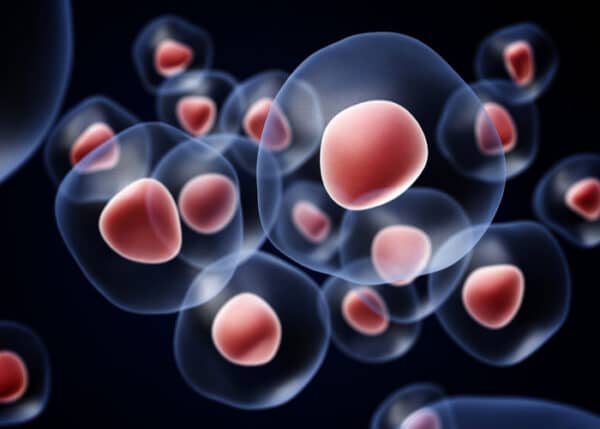1. How do BMC stem cell injections, platelet rich plasma (PRP) injections and amniotic fluid-derived allografts accelerate the healing process of orthopedic injuries?
Platelet rich plasma (PRP), BMC (bone marrow concentrate) stem cell injections and amniotic fluid-derived allografts (such as Orthoflo) all utilize the latest in medical technology when combined with the body’s natural healing abilities. When the body becomes injured, it initiates a healing response that includes rebuilding important tissue with the use of cells and growth factors.
Growth factors are characterized as small signaling proteins that help the body initiate and control the healing process. Mesenchymal stem cells (MSC) are specific cells to the musculoskeletal system, which are able to differentiate into different tissue types such as ligament, tendon, muscle and even bone. By providing these cells or growth factors to the injured site, Dr. Matthew Provencher may be able to help decrease inflammation, improve or accelerate healing and allow for pain relief and/or a quicker recovery.

2. Are BMC stem cell injections, platelet rich plasma (PRP) and allografts all considered regenerative therapies?
The simple answer is no. While PRP accelerates the body’s ability to heal itself through the aid of growth factors, it is not considered a regenerative therapy.
BMC and amniotic-fluid derived allografts on the other hand are considered regenerative therapies because they are believed to assist with both healing acceleration and tissue regeneration. The additional “pluripotent” adult stem cells withdrawn from the patient, typically from a patient’s own iliac pelvic bone, used for the BMC procedure are “undifferentiated,” meaning they are able to replicate themselves into (or regenerate) various types of tissue. Amniotic-fluid derived allografts contain cells and growth factors from donor tissue, specifically placenta and amniotic fluid.
3. Why is bone marrow concentrate (BMC) called a stem cell “like” therapy?
The term “stem cell therapy” is often associated with controversial treatments using embryonic or fetal stem cells collected from aborted fetal tissue. By using a patient’s own “pluripotent” adult stem cells or placental tissues, the BMC stem cell injections utilized by Dr. Provencher can replicate the same benefits of stem cell therapy without the ethical concerns of using embryonic/fetal stem cells.
4. Is there an age limit for BMC stem cell injections?
There is not an age limit for BMC stem cell injections, but certain factors should be considered in patients over the age of 60 years.
Patients up to the age of 60 can generally achieve tissue regeneration using their own “pluripotent” adult stem cells through BMC therapy.
Unfortunately, as the body ages, its ability to regenerate tissue from autologous (its own) stem cells diminishes. It is reported the body’s number of stem cells begins to decrease with age starting at about 40 years. After age 60, autologous BMC typically fails to provide regeneration because there are not enough stem cells in the bone marrow. Between the ages of 70 and 80 years, there are almost no stem cells in the bone marrow to use. After age 80, stem cells in the bone marrow are virtually non-existent.
Due to this decline in autologous stem cells, patients over 60 years of age generally achieve better results using a combination of a healing accelerator, such as PRP or an amniotic-fluid derived allograft, and allograft tissues derived from another source for regeneration.
5. Do all platelet rich plasma (PRP) and bone marrow concentrate (BMC) stem cell therapies provide the same healing and regeneration benefits?
The answer is no. It is very important patients considering PRP and BMC therapies understand the doctors who administer these treatments buy kits to concentrate and prepare the blood or bone marrow for the injections. As the regenerative orthopedic treatments continue to gain popularity throughout the country, there are more companies that sell these kits. It is important to note that only a small number of companies have received FDA approval for their treatments. This means that some physicians are using kits that are not FDA approved, or kits that provide significantly less concentrations of cells than the approved kits.
Research shows that the minimum level for the concentration of platelets necessary to achieve positive results from platelet rich plasma injections are 5-7 times that of the human blood platelet count. Studies conducted in head to head comparisons have repeatedly shown that inexpensive and inferior kits used by some physicians only produce 2-3 times the blood platelet concentration. It is very important that patients ask if the kits their physicians are using are FDA approved and if they are meeting the concentration levels necessary for a positive outcome.
The PRP kits used by Dr. Provencher and his orthopedic team are FDA approved and produce at least 7-9 times concentrate of platelets. The BMC kits are one of very few approved by the FDA and consistently produce higher counts of nucleated stem cells than the competitors’ kits in head to head studies.
6. Why doesn’t my insurance cover this treatment?
Since regenerative orthopedic treatments are still considered experimental, insurance does not cover them. Cash pay is required at this time.
To learn more about the affects of biologics in sports medicine, please visit the biologic research section of our website: Biologic Research.